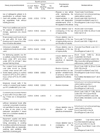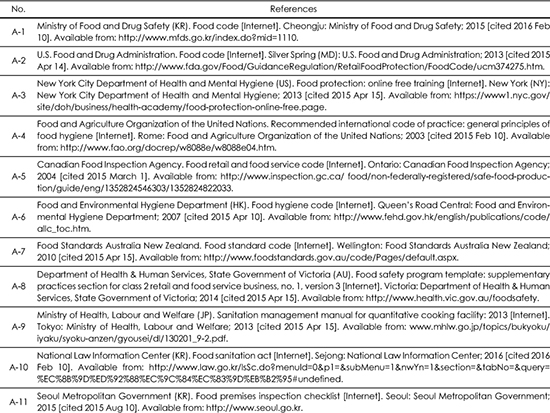Abstract
Purpose
Needs for reevaluation of food code standards and regulations for cooked foods produced in restaurants and institutional foodservice to minimize risk factors leading to foodborne outbreaks are on the rise. The purpose of the study was to propose updated standards for cooked foods of restaurants by testing whether or not experts agree to include them as a standard.
Methods
Qualitative and quantitative research methods were applied via a survey by email and workshop hold for experts panel discussions.
Results
Seven newly proposed standards were selected as follows: (1) sanitizing vegetables and fruits with no heating process after washing, (2) rapid cooling of cooked foods after heating process, (3) monitoring cooking temperatures, (4) minimum 2 hours holding after cooking for temperature control of safety (TCS) foods without temperature control, (5) banning practices for workers such as bare hands handling of ready-to-eat foods, (6) maintaining cleanliness of food contact surfaces for disposable products, and (7) cold holding standards for sushi.
Figures and Tables
References
1. Ministry of Food and Drug Safety (KR). The 2015 foodborne statistics: places caused by foodborne illness [Internet]. Cheongju: Ministry of Food and Drug Safety;2015. cited 2016 Apr 23. Available from: http://www.foodsafetykorea.go.kr/portal/healthyfoodlife/foodPoisoning-Stat.do?menu_no=519&menu_grp=MENU_GRP02.
2. Shin H, Lee S, Kim JS, Kim J, Han KH. Socioeconomic costs of food-borne disease using the cost-of-illness model: applying the QALY method. J Prev Med Public Health. 2010; 43(4):352–361.

3. Kwak TK, Kang YJ, Rye K, Moon HK, Chang HJ, Lee KE, Choi JW. Food safety principle and practice. Food safety principle and practice. Paju: Gyomoonsa;2014.
4. The 2014 foodservice position and 2015 forecasts. Hotel Restaur. 2015; 287:101–143.
5. Gregoire MB. Foodservice organizations: a managerial and systems approach. 7th ed. Upper Saddle River (NJ): Prentice Hall;2010.
6. Shin SK. Improvement of operation system for technical regulation of foods [Final reports of the Ministry of Food and Drug Safety]. Seoul: Hanyang Women's University;2013.
7. Ministry of Food and Drug Safety (KR). Food safety management manual for restaurants. Cheongju: Ministry of Food and Drug Safety;2014.
8. Chang HJ, Ju SY, Heo EJ, Kim SH, Kwak TK, Hong WS. Qualitative analysis of current food code for the improvement of hygiene management practices in restaurants and institutional foodservice premises by comparing standards and guidelines of the developed countries. J Foodserv Manage. 2016; 19(3):7–24.
9. Ministry of Education (KR). School meal code enforcement rule [Internet]. Cheongwon: Ministry of Education;2013. cited 2015 Mar 30. Available from http://www.law.go.kr/lsInfoP.do?lsiSeq=146542&efYd=20131123#0000.




 PDF
PDF ePub
ePub Citation
Citation Print
Print






 XML Download
XML Download